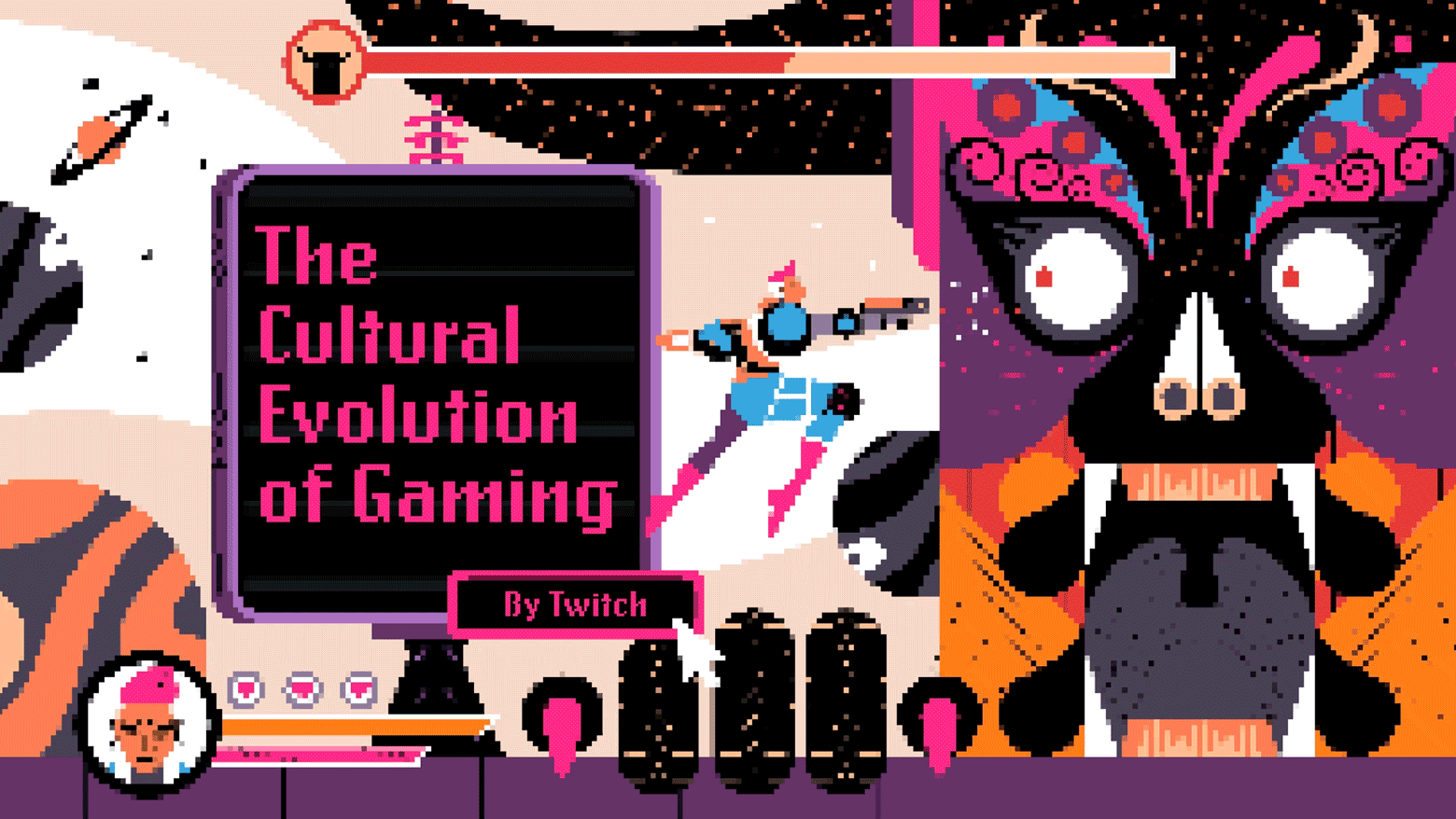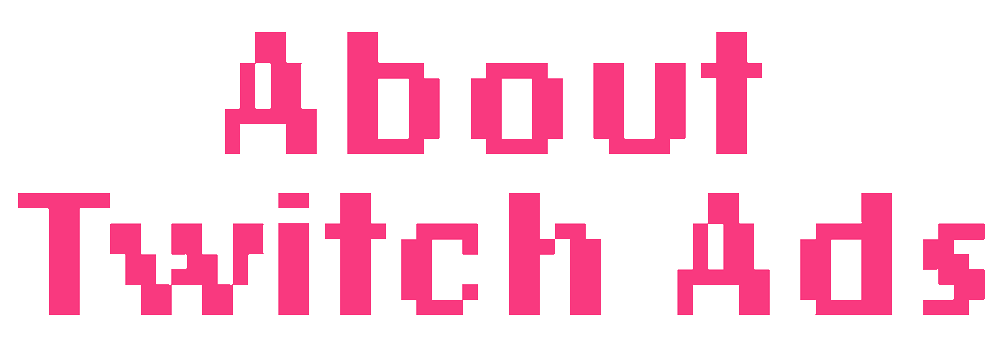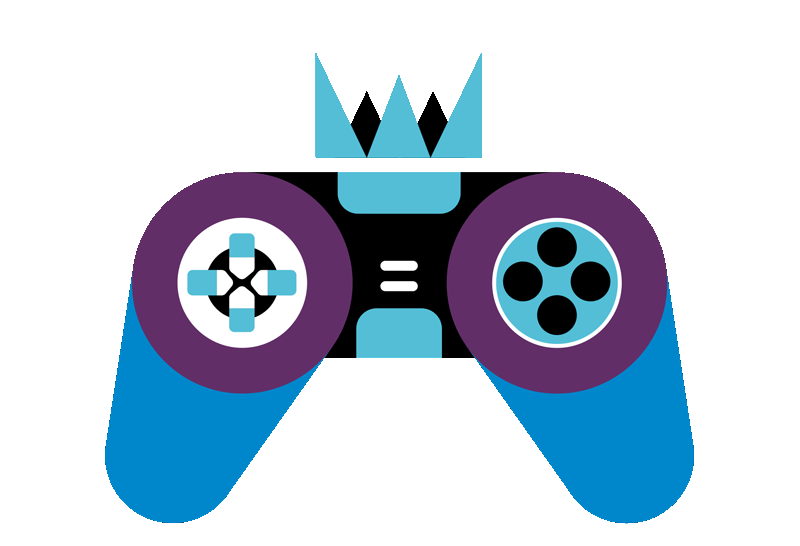

It’s 1998. You just got home from school. The sounds of your older sister and her friends playing The Legend of Zelda: Ocarina of Time lure you to the basement. As Link reaches the first dungeon inside the Great Deku Tree, synth sounds mimicking gusts of wind whoosh through the entrances to the tree. To break the curse of the Great Deku Tree, Link must battle the creepy arachnid Queen Gohma, so you wait anxiously to see if Link’s aim will be true with the Fairy Slingshot.
It's a core memory that has shaped the identity of a generation. And no matter what game was being played, one thing has remained consistent: the excitement, camaraderie, comfort and escape people feel when they interact with video games—and that presents a treasure trove of opportunities for brands to tap into.
As gaming lives at the forefront of entertainment and technology, it’s become not only a reflection of what gamers want, but of what consumers as a whole want. More people are playing games than ever before, and video games are crucial to the global cultural conversation.
Gaming culture is everywhere today. You can race on Mario Kart and then watch The Super Mario Bros. Movie on your favorite streaming service. You can shop at Home Depot from within Roblox. You can catch a The Kid LAROI concert on Fortnite. You can play as Colonel Sanders in the latest version of Street Fighter.
But as gaming evolves, appealing to gamers is not a one-strategy-fits-all situation. Brands of all backgrounds need to understand the importance and opportunity of video gaming not as a sub-category of culture, but as mainstream culture itself. In other words, as player one.
Read on to master the mechanics of gaming culture and acquire cheat codes to connect with today’s gamers.



It’s 1998. You just got home from school. The sounds of your older sister and her friends playing The Legend of Zelda: Ocarina of Time lure you to the basement. As Link reaches the first dungeon inside the Great Deku Tree, synth sounds mimicking gusts of wind whoosh through the entrances to the tree. To break the curse of the Great Deku Tree, Link must battle the creepy arachnid Queen Gohma, so you wait anxiously to see if Link’s aim will be true with the Fairy Slingshot.
It's a core memory that has shaped the identity of a generation. And no matter what game was being played, one thing has remained consistent: the excitement, camaraderie, comfort and escape people feel when they interact with video games—and that presents a treasure trove of opportunities for brands to tap into.

As gaming lives at the forefront of entertainment and technology, it’s become not only a reflection of what gamers want, but of what consumers as a whole want. More people are playing games than ever before, and video games are crucial to the global cultural conversation.
Gaming culture is everywhere today. You can race on Mario Kart and then watch The Super Mario Bros. Movie on your favorite streaming service. You can shop at Home Depot from within Roblox. You can catch a The Kid LAROI concert on Fortnite. You can play as Colonel Sanders in the latest version of Street Fighter.
But as gaming evolves, appealing to gamers is not a one-strategy-fits-all situation. Brands of all backgrounds need to understand the importance and opportunity of video gaming not as a sub-category of culture, but as mainstream culture itself. In other words, as player one.
Read on to master the mechanics of gaming culture and acquire cheat codes to connect with today’s gamers.

Unsurprisingly, many people have a dated or stereotyped view of who gamers are and how they play. But the gaming audience is vast and diverse, both in terms of who plays, how they play and what they want from the gaming experience.
Today, more than 160 million adults in the U.S. identify themselves as gamers. The average gamer is 33 years old and is as likely to be female as male, per the Entertainment Software Association’s annual gamer profile.
The truth is, for a majority of people, video games are part of their daily lives. They turn to games to bring them joy, relieve their daily stress, stimulate themselves mentally and connect with others. In fact, Twitch found that 68% of its gamers say gaming is a core part of their identity, and 81% believe gaming bridges gaps between countries and cultures.
Twitch breaks the gaming audience down in two different ways—by how gaming fits in their lives, and by the different ways they actually play games.
Let’s start with the role of gaming in their lives. Hardcore gamers—the people who live and breathe gaming—account for about a fifth of gamers overall. But they also make up about a third of the people on Twitch. Gaming is central to their lives and may be their primary form of entertainment. The most hardcore gamers on Twitch spend an average of 34 hours a week gaming across different devices.
Not everyone is so dedicated. But that doesn’t mean they’re not enthusiasts. About half of gamers overall are midcore, meaning they have a few games that they play on a regular basis. Casual gamers play games like puzzles and may dabble in video games. Hypercasual gamers, meanwhile, only play games to pass the time between other activities, like during their morning commute or while waiting in line for coffee.
Twitch also segments that gaming audience into four categories based on how they play.
Completionists stop at nothing to complete every mission, collect every item and earn every achievement a game has to offer. Competitive gamers want to see their name at the top of the leaderboard and thrive in player vs. player settings. Cooperative gamers prefer multiplayer games that let them join with their teammates to work toward a common goal. Finally, Adventurers are often solo players who love to get lost in a game’s story mode.

Video games were once thought of as cut-and-dry, win-or-lose, shoot-or-get-shot, one-way experiences. But it’s not all about pwning noobs anymore.
Today, there’s a game for every person, occasion, want and need. People can be themselves and know that there are games that will invite, appeal to and celebrate those traits.
So, what do gamers want and need and how can brands fit into that picture?
In a survey by Twitch Ads, video game fans identified escape as a primary reason to play games. But games also empower people to forge their own identities and build a sense of belonging.
Games also help people do things they may not have a chance to do in the real world—like seek out the spotlight and make friends, according to the same survey. An overworked single dad, for example, may not have the time to play touch football with his friends on the weekend, but can join them after the kids are asleep for a game of Madden NFL.
Some of the most popular genres of gaming today indicate even more reasons people are flocking to games.
Cozy gaming lets players choose gentler scenarios over battlegrounds. In games like Stardew Valley and Animal Crossing, people can tend to virtual gardens, decorate digital homes and even design entire worlds.
These newer genres of games provide players with coping strategies for stress relief and tools for creative self-expression, and open the door to new audiences, like non-thrill-seeking players.
Similarly, choose-your-own-adventure games speak to the modern gamer’s desire to write their own story rather than be sucked into the standard win-or-lose structure. Games like AI Dungeon, which infuse choose-your-own-adventure with AI, also hint at a fresh direction for gaming that’s tuned in to what’s going on in tech.
Finally, with over 71% of Gen Z spending over a quarter of their time playing video games and watching video game content, according to Newzoo, games that explore topics like mental health, gender and sexuality have emerged. Gaming has become a vehicle for facilitating positive play and dialogue.

While these are some of the most popular video game genres, it’s far from an exhaustive list, and many games today have even been known to blend elements of various genres.


While these are some of the most popular video game genres, it’s far from an exhaustive list, and many games today have even been known to blend elements of various genres.

The impact of video games can be seen in every other type of entertainment and media, from film and TV to books, art and even fashion.
Certainly, video game adaptations are nothing new for Hollywood, but the success of some has been spotty—think Super Mario Bros, Street Fighter or Resident Evil. But as prestige video games (popularly referred to as AAA in the gaming industry) take on richer, more complex narratives and feature more robust character development, they’ve become formidable fodder for content by other industries.
The success of The Last of Us is a stellar example. The game was set apart by its ability to mix action, story and protagonists who didn’t look like or behave like typical action game characters, and it went on to sell tens of millions of copies. It not only spawned a video game sequel, but also a limited-edition comic and a much-honored HBO series. The TV version succeeded in large part because it stayed loyal to the game’s storytelling.
But the influence of video games goes beyond simply adapting characters and game plots into movies. The best-selling novel Tomorrow, Tomorrow and Tomorrow takes place in the world of game development. The action-comedy movie Free Guy is set in a massively multiplayer game. And the U.K.’s Royal Philharmonic Orchestra has sold out Royal Albert Hall for orchestral concerts of video game soundtracks.
“Culturally, we’re seeing a shift in what’s considered wasted time. Is watching TV wasted time? Is going on a walk wasted time? All these things are meant to calm us, distract us, entertain us and overall help us enjoy ourselves. Now, people are starting to accept gaming as equal to these other forms of relaxation or escapism—not as a waste of time, but actually, as a wonderful use of time that ultimately fills our cup.”

While playing video games can be a solo or multiplayer experience, the community surrounding a video game can be just as important as the game itself. Either way, gaming serves people by helping them understand who they are, how they express themselves and where they feel seen.
In the gaming world, people can amplify what makes them different and through that, find their tribe.
In fact, according to a Twitch Ads research study exploring diversity in gaming, feeling connected to the community and feeling welcomed by the community are two of the largest factors gamers consider when deciding which game to play or which streamer to watch.
Online, building a safe haven for people of diverse identities is becoming more and more top of mind for the companies developing and publishing video games as well as the brands that engage with gaming communities. In fact, gamers want brands to do their part by sponsoring more gamers from diverse backgrounds, highlighting more diversity in advertising campaigns, and, perhaps most important, working with gamers, streamers and communities that create positive environments for diverse gamers.
Services like Twitch act as a vehicle for this kind of community-building, while offline, events like TwitchCon bring streamers and viewers together to help people connect in person. The gamer get-together celebrates the different ways people interact with games (playing, watching, cosplaying, etc.) and holds panels on topics like the importance of LGBTQIA+ representation, safe ways to gather communities and inclusive content creation.
Player safety is of the utmost concern. And features that let people choose who they game with prioritize this. In a testament to the strength of the communities that gaming is building, 81% of gamers find joy in helping others feel safe when they experience bigotry, according to Twitch’s Diversity in Gaming and Livestreaming report. This is important for many groups of gamers who turn to gaming to express their personality and talents freely, as well as to find others who want the same.

In the past, gaming was more of a one-way street. It didn’t offer players much opportunity to connect beyond the actual gameplay—at best, it involved sharing a quick “good game” in the chat box or high-fiving your brother after a particularly rousing few rounds of Super Smash Bros. Gaming peripherals like headsets eventually cracked open the door to collaborative play with MMORPGs, and advances in livestreaming are taking interactivity even further.
By inviting people from across the globe to build connections and friendships, show off their skills, learn new things about a game they’re playing or want to play eventually, and of course, have a great time while doing it, livestreaming enhances the social nature of gaming.

This has helped transform games into an accessible and interactive experience via the livestream—even single-player RPGs can feel massively multi-player when viewers are chatting up a storm along the way. Completing quests in The Elder Scrolls V: Skyrim or dropping block after block in Tetris might seem like solo acts, but when they’re livestreamed, the experience expands to include the audience cheering on the player in the chat, offering up healing potion recipes or sharing their favorite strategies for setting up the perfect base-layer.
And while live gaming content on Twitch drives viewer consideration, it doesn’t mean that a brand must be endemic to video games to be welcome on the service. According to a research study conducted by Twitch, 72% of surveyed respondents believe brands can improve the livestreaming experience, and 58% report they’re more likely to consider brands that support the Twitch community.
For example, to celebrate the launch of the sixth installment of the game, fried chicken chain KFC gave its mascot, Chef Colonel Sanders, a Street-Fighter-worthy makeover. Players who recorded and shared their use of the Colonel and his menu of moves, which included Big Crunch Combo and Boneless Combo, in the game, were gifted real-life rewards—like a $50 KFC gift card—from the brand.
Initiatives like this tap into the power of livestreaming by encouraging people to not only experience games in a new way but also rewarding them for sharing—win or lose. Just like the gamers, viewers tuning into a livestream aren’t as interested in who’s winning or losing as they are in enjoying the experience—in this case, watching a fast-food friendly face spar with the Street Fighter crew.





In the past, gaming was more of a one-way street. It didn’t offer players much opportunity to connect beyond the actual gameplay—at best, it involved sharing a quick “good game” in the chat box or high-fiving your brother after a particularly rousing few rounds of Super Smash Bros. Gaming peripherals like headsets eventually cracked open the door to collaborative play with MMORPGs, and advances in livestreaming are taking interactivity even further.
By inviting people from across the globe to build connections and friendships, show off their skills, learn new things about a game they’re playing or want to play eventually, and of course, have a great time while doing it, livestreaming enhances the social nature of gaming.

This has helped transform games into an accessible and interactive experience via the livestream—even single-player RPGs can feel massively multi-player when viewers are chatting up a storm along the way. Completing quests in The Elder Scrolls V: Skyrim or dropping block after block in Tetris might seem like solo acts, but when they’re livestreamed, the experience expands to include the audience cheering on the player in the chat, offering up healing potion recipes or sharing their favorite strategies for setting up the perfect base-layer.
And while live gaming content on Twitch drives viewer consideration, it doesn’t mean that a brand must be endemic to video games to be welcome on the service. According to a research study conducted by Twitch, 72% of surveyed respondents believe brands can improve the livestreaming experience, and 58% report they’re more likely to consider brands that support the Twitch community.
For example, to celebrate the launch of the sixth installment of the game, fried chicken chain KFC gave its mascot, Chef Colonel Sanders, a Street-Fighter-worthy makeover. Players who recorded and shared their use of the Colonel and his menu of moves, which included Big Crunch Combo and Boneless Combo, in the game, were gifted real-life rewards—like a $50 KFC gift card—from the brand.
Initiatives like this tap into the power of livestreaming by encouraging people to not only experience games in a new way but also rewarding them for sharing—win or lose. Just like the gamers, viewers tuning into a livestream aren’t as interested in who’s winning or losing as they are in enjoying the experience—in this case, watching a fast-food friendly face spar with the Street Fighter crew.
“There were more than 10,000 games released last year on Steam alone. Streamers can create communities around almost every one of those games on Twitch. So, while I think it’s fair to say that Twitch has helped gaming become more mainstream, ultimately what we want is for our viewers to have an experience that is unique to them; unique to the community to which they choose to be a part of.”


You can’t talk about the shifting gaming experience without discussing the global rise of esports.
Competitive gaming is now as rigorous and organized as traditional sports ... and with an audience to match. According to Newzoo, the global esports audience will surpass 650 million people by 2025.
Today’s technology allows esports competitions to be broadcast worldwide. Twitch, for example, livestreams the biggest esports tournaments and gives esports professionals an opportunity to interact with their fans in real time.
For brands, esports and competitive gaming entertainment present a unique opportunity to engage with the gaming audience. And while some sponsors seem a natural fit for the esports audience—think Intel, Red Bull, Mountain Dew and Microsoft—other non-endemic brands have risen to the opportunity, taking advantage of the up-close-and-personal relationship esports competitors have with their fans. Brands like Dunkin’, Fidelity and State Farm serve as official marketing partners of Twitch Rivals, Twitch’s original head-to-head competitive gaming series.
L’Oréal, for example, sponsored five-time world champion women’s esports team Dignitas, and the team has given live makeup tutorials and shared product content information with their streaming communities. But L’Oréal sought to engage an even wider audience within the gaming community by reaching male consumers (via its L’Oréal Men Export brand) with a sponsorship of Fnatic, showing up on their shirts for games including FIFA and the League of Legends World Championship. The brand also extended efforts to the LGBTQIA+ community via Twitch, where its subsidiary NYX Professional Makeup hosted a panel of LGBTQIA+ streamers at TwitchCon Paris to discuss their experience with online inclusivity.

Besides being a lot of fun, virtual reality (VR) and augmented reality (AR) games reflect just how real and immersive games are becoming. 3D environments and realistic sensations have taken games from inside a screen into the hands of the player—literally.
Advances in VR offer new benefits for gamers that didn’t exist before. For example, the ability to overcome real-life fears, like a fear of darkness in games like Half-Life: Alyx, or a fear of heights and flying in No Man’s Sky—all minus the real-life risk. For improved physical exercise and mental health, gamers can look to VR games like Rec Room.
VR is also stirring the imaginations of VTubers, or online content creators who make video content with a virtual avatar. VTubers have their own avatar that they either commissioned from an artist, bought pre-made through a marketplace or designed themselves. Their characters then come to life on streams through the use of animation software programs and motion capture technology.
Viewership of VTubing content on Twitch grew 350% between January and August 2022, compared to the same time frame in 2021.
VTubing echoes the individuality and acceptance that gamers crave. It allows people to express themselves however they want and build a community on their own terms. These digital representations can often feel even more authentic to VTubers, as they speak to parts of them that can’t otherwise be seen—like adding a sword to an avatar to show off an adventurous spirit. Even brands are participating in the increasingly popular format, with Pizza Hut and Kellogg’s Frosted Flakes taking cues from VTubers and bringing animated characters to life on stream.
AR adds a new level of accessibility and action to video games. Consider Pokémon Go, the mobile game that took the world by storm. The game combined geolocation services with AR to play up the feelings of discovery and wonder that people typically feel inside a game, bringing that excitement into the real world. Pokémon Go-ers could be spotted battling it out at the gym, checking lures at the park and celebrating wins together, in person. All they needed? Their phones and a desire to catch em’ all, of course.
As VR, AR and emerging virtual worlds become more critical to gaming audiences, brands can find their way to be represented as well.
Fashion brands, for instance, have been at the forefront—finding ways to “dress” players’ virtual selves. In recent years, Ralph Lauren has shown up in Fortnite, while Gucci is on Roblox and Marc Jacobs is in Animal Crossing. Lacoste created a digital collection for Minecraft and then produced a full physical wardrobe of clothing and accessories.
“One thing we are seeing is our gaming partners leaning more into gaming influencers. A good example of that is Diablo IV. Blizzard Entertainment had a very strong influencer approach which included enabling some streamers to livestream gameplay during early access and open beta, while at launch they had unique, exclusive item drops each week for the first four weeks. This type of activity is a really effective way to encourage streamers and go a step beyond traditional marketing.”

Brands should be ready to take it to the next level with gamers. Here are a few tips to get you going.
Be authentic: Being new to video games isn't a bad thing. While you should do your research and make informed decisions on messaging this audience, you shouldn't overdo it with “gamer speak”—no need to become a meme. Instead, focus on connecting with gamers and the gaming community at large, whether that’s working with video game livestreamers on Twitch or crafting other brand sponsorship opportunities.
Determine the right sponsorship opportunity: Whether it’s connecting with a streamer who livestreams their favorite cozy games on Twitch or deciding to sponsor an esports team or event, brands need to figure out what sponsorship opportunity is best for them. Consider brand suitability, but allow the streamer to represent you in the same authentic way that they’ve built their own audience.
Build brand affinity beyond traditional channels:
Your audience isn’t just consuming media in traditional marketing channels. They’re livestreaming and watching livestreams on Twitch, they’re watching short-form videos on social, and they’re participating in conversations on web forums and online fan groups. Find ways to associate your brand with the fun and community that surrounds video games to reach this audience, instead of exhausting the same old tactics.
Represent the full spectrum of gamers: The gaming community is not a monolith; it represents the diversity of the real world. Diverse gamers have clearly said they want brands to be inclusive in their gaming campaigns. Be sure your brand supports the gamers and streamers who represent the best aspects of the gaming community.
Have some fun: Remember that people play games because they find it joyful. Any campaign or sponsorship should engage and delight people in much the same way.

You can’t talk about the shifting gaming experience without discussing the global rise of esports.
Competitive gaming is now as rigorous and organized as traditional sports ... and with an audience to match. According to Newzoo, the global esports audience will surpass 650 million people by 2025.
Today’s technology allows esports competitions to be broadcast worldwide. Twitch, for example, livestreams the biggest esports tournaments and gives esports professionals an opportunity to interact with their fans in real time.
For brands, esports and competitive gaming entertainment present a unique opportunity to engage with the gaming audience. And while some sponsors seem a natural fit for the esports audience—think Intel, Red Bull, Mountain Dew and Microsoft—other non-endemic brands have risen to the opportunity, taking advantage of the up-close-and-personal relationship esports competitors have with their fans. Brands like Dunkin’, Fidelity and State Farm serve as official marketing partners of Twitch Rivals, Twitch’s original head-to-head competitive gaming series.
L’Oréal, for example, sponsored five-time world champion women’s esports team Dignitas, and the team has given live makeup tutorials and shared product content information with their streaming communities. But L’Oréal sought to engage an even wider audience within the gaming community by reaching male consumers (via its L’Oréal Men Export brand) with a sponsorship of Fnatic, showing up on their shirts for games including FIFA and the League of Legends World Championship. The brand also extended efforts to the LGBTQIA+ community via Twitch, where its subsidiary NYX Professional Makeup hosted a panel of LGBTQIA+ streamers at TwitchCon Paris to discuss their experience with online inclusivity.

Besides being a lot of fun, virtual reality (VR) and augmented reality (AR) games reflect just how real and immersive games are becoming. 3D environments and realistic sensations have taken games from inside a screen into the hands of the player—literally.
Advances in VR offer new benefits for gamers that didn’t exist before. For example, the ability to overcome real-life fears, like a fear of darkness in games like Half-Life: Alyx, or a fear of heights and flying in No Man’s Sky—all minus the real-life risk. For improved physical exercise and mental health, gamers can look to VR games like Rec Room.
VR is also stirring the imaginations of VTubers, or online content creators who make video content with a virtual avatar. VTubers have their own avatar that they either commissioned from an artist, bought pre-made through a marketplace or designed themselves. Their characters then come to life on streams through the use of animation software programs and motion capture technology.
Viewership of VTubing content on Twitch grew 350% between January and August 2022, compared to the same time frame in 2021.
VTubing echoes the individuality and acceptance that gamers crave. It allows people to express themselves however they want and build a community on their own terms. These digital representations can often feel even more authentic to VTubers, as they speak to parts of them that can’t otherwise be seen—like adding a sword to an avatar to show off an adventurous spirit. Even brands are participating in the increasingly popular format, with Pizza Hut and Kellogg’s Frosted Flakes taking cues from VTubers and bringing animated characters to life on stream.
AR adds a new level of accessibility and action to video games. Consider Pokémon Go, the mobile game that took the world by storm. The game combined geolocation services with AR to play up the feelings of discovery and wonder that people typically feel inside a game, bringing that excitement into the real world. Pokémon Go-ers could be spotted battling it out at the gym, checking lures at the park and celebrating wins together, in person. All they needed? Their phones and a desire to catch em’ all, of course.
As VR, AR and emerging virtual worlds become more critical to gaming audiences, brands can find their way to be represented as well.
Fashion brands, for instance, have been at the forefront—finding ways to “dress” players’ virtual selves. In recent years, Ralph Lauren has shown up in Fortnite, while Gucci is on Roblox and Marc Jacobs is in Animal Crossing. Lacoste created a digital collection for Minecraft and then produced a full physical wardrobe of clothing and accessories.
“One thing we are seeing is our gaming partners leaning more into gaming influencers. A good example of that is Diablo IV. Blizzard Entertainment had a very strong influencer approach which included enabling some streamers to livestream gameplay during early access and open beta, while at launch they had unique, exclusive item drops each week for the first four weeks. This type of activity is a really effective way to encourage streamers and go a step beyond traditional marketing.”

Brands should be ready to take it to the next level with gamers. Here are a few tips to get you going.
Be authentic: Being new to video games isn't a bad thing. While you should do your research and make informed decisions on messaging this audience, you shouldn't overdo it with “gamer speak”—no need to become a meme. Instead, focus on connecting with gamers and the gaming community at large, whether that’s working with video game livestreamers on Twitch or crafting other brand sponsorship opportunities.
Determine the right sponsorship opportunity: Whether it’s connecting with a streamer who livestreams their favorite cozy games on Twitch or deciding to sponsor an esports team or event, brands need to figure out what sponsorship opportunity is best for them. Consider brand suitability, but allow the streamer to represent you in the same authentic way that they’ve built their own audience.
Build brand affinity beyond traditional channels:
Your audience isn’t just consuming media in traditional marketing channels. They’re livestreaming and watching livestreams on Twitch, they’re watching short-form videos on social, and they’re participating in conversations on web forums and online fan groups. Find ways to associate your brand with the fun and community that surrounds video games to reach this audience, instead of exhausting the same old tactics.
Represent the full spectrum of gamers: The gaming community is not a monolith; it represents the diversity of the real world. Diverse gamers have clearly said they want brands to be inclusive in their gaming campaigns. Be sure your brand supports the gamers and streamers who represent the best aspects of the gaming community.
Have some fun: Remember that people play games because they find it joyful. Any campaign or sponsorship should engage and delight people in much the same way.

Twitch Ads is a global creative powerhouse that helps brands experiment with and launch interactive ads on Twitch that address younger audiences' need for community-driven and inclusive content. Launched in 2011, Twitch is an interactive livestreaming service and global community that comes together every day to create unique, live and unpredictable experiences from the interactions of millions. It brings the joy of co-op to everything, from casual gaming and world-class esports to anime marathons, music and art streams. Twitch also hosts TwitchCon, where tens of thousands of people come together to celebrate and connect with others who share their interests and passions.

Illustrated by Jonny Wan


 Built with Shorthand
Built with Shorthand





